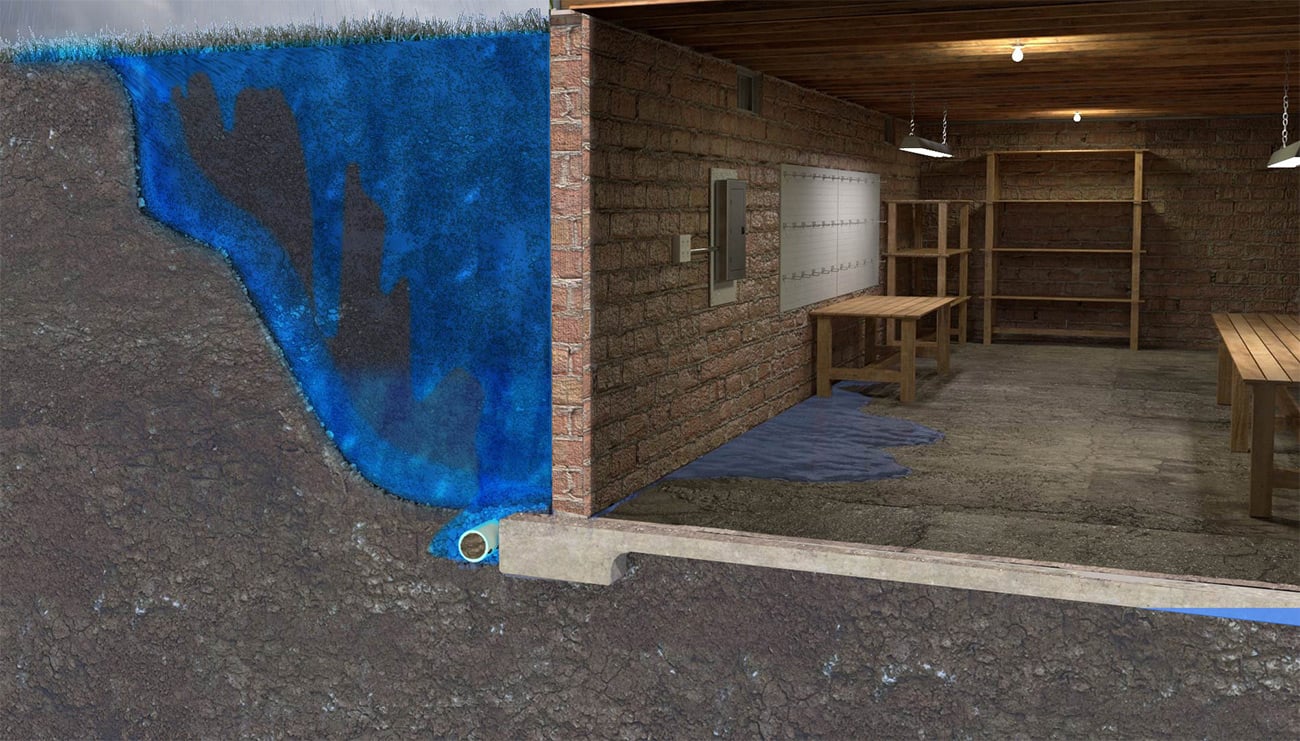Why Does My Basement Leak Where the Wall Meets the Floor?
The wall-floor joint is a common source of water leaking into a basement
The way basement foundations are constructed and the different materials used together contribute to the common problem of water leaking through a basement wall and/or basement floor. Each of the four foundation types described below has unique characteristics that should be considered when solving a wet basement problem and designing a waterproofing system.
The one universal factor contributing to a wet basement is the poor performance of exterior drainage systems. Even though many houses have footing drains as shown in the drawings below, these drains don’t perform well if at all. The drains are easily crushed during the backfilling process and will eventually clog with silt and plant roots, rendering it useless.
An interior French drain system is effective for ALL foundation types.
Every type of basement foundation is prone to water leaking through walls as well as along the floor-wall joint. An effective waterproofing system should aim to capture this leakage as it enters and before it can pool onto the basement floor. This is the principle behind the WaterGuard® drainage system from Basement Systems.
Looking for a price? Get a no cost, no obligation free estimate.








